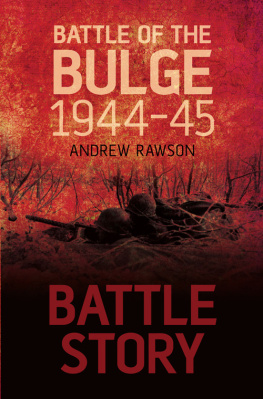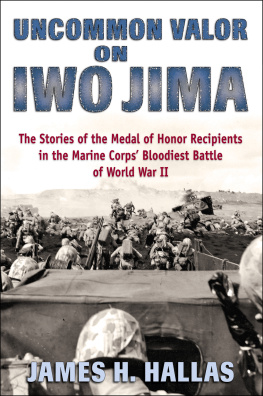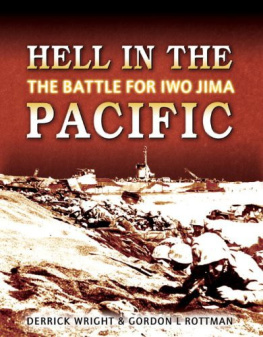
CONTENTS
First published in 2012 by
Spellmount, an imprint of
The History Press
The Mill, Brimscombe Port
Stroud, Gloucestershire, GL 5 2 QG
www.thehistorypress.co.uk
This ebook edition first published in 2012
All rights reserved
Andrew Rawson, 2012
The right of Andrew Rawson to be identified as the Author of this work has been asserted in accordance with the Copyrights, Designs and Patents Act 1988.
This ebook is copyright material and must not be copied, reproduced, transferred, distributed, leased, licensed or publicly performed or used in any way except as specifically permitted in writing by the publishers, as allowed under the terms and conditions under which it was purchased or as strictly permitted by applicable copyright law. Any unauthorised distribution or use of this text may be a direct infringement of the authors and publishers rights, and those responsible may be liable in law accordingly.
EPUB ISBN 978-0-7524-7799-2
MOBI ISBN 978-0-7524-7798-5
Original typesetting by The History Press
Ebook compilation by RefineCatch Limited, Bungay, Suffolk
Batley, Lieutenant Colonel Whitman S., Iwo Jima: Amphibious Epic (USMC, Historical Section, Division of Public Information, Headquarters, US Marine Corps, 1954)
Bradley, James and Ron Powers, Flags of Our Fathers (Bantam, 2006)
Garand, George W. and Truman R. Strobridge, History of US Marine Corps Operations in World War II, Vol IV: Western Pacific Operations, Part VI: Iwo Jima (Historical Division Headquarters, US Marine Corps, 1971)
Hammel, Eric, Iwo Jima: Portrait of a Battle: United States Marines at War in the Pacific (Zenith Press, 2006)
Haynes, Major General Fred and James A. Warren, The Lions of Iwo Jima (Holt Paperbacks, 2009)
Kakehashi, Kumiko, So Sad to Fall in Battle: An Account of War Based on General Tadamichi Kuribayashis Letters from Iwo Jima (Presidio Press, 2007)
Newcomb, Richard F. and Harry Schmidt, Iwo Jima (Holt Paperbacks, 2002)
Smith, Larry, Iwo Jima: World War II Veterans Remember the Greatest Battle of the Pacific (Norton & Company, 2008)
Wheller, Richard and Richard Wheeler, Iwo (US Naval Institute Press, 1994)
Websites
http://www.defense.gov/home/features/iwo_jima/index.html
http://www.ibiblio.org/hyperwar/PTO/Iwo/index.html
http://www.marines.mil/news/publications/Pageswesternpacificoperationshistoryofusmarinecorpsoperationsinworldwariipt4.aspx
http://www.iwojima.com/
Films and Documentaries
Glamour Gal (1945); a film about Marine artillery.
To the Shores of Iwo Jima (1945); a documentary produced by the United States Navy, Marine Corps and Coast Guard.
Sands of Iwo Jima (1949); a film starring John Wayne.
The Outsider (1961); Tony Curtis stars as Ira Hayes, one of the flag raisers.
The World at War (1973); episode 23 of the BBC documentary covers the Iwo Jima campaign.
Flags of Our Fathers (2006); a film directed by Clint Eastwood giving the American perspective, based on James Bradleys and Ron Powers book of the same name.
Letters from Iwo Jima (2006); originally titled Red Sun, Black Sand, this film gives the Japanese perspective.
The Pacific (2010); part 8 of the HBO mini-series produced by Tom Hanks and Steven Spielberg includes a piece on Iwo Jima.
As early as September 1943 the Joint War Planning Committee met in Washington to discuss plans for the campaign against the Japanese homeland. The Central Pacific Forces had first to neutralise the Caroline Islands so that new sea and air bases could be established; only then could attacks be launched against the Japanese Navy. The Army Air Force also wanted air bases on the Mariana Islands so their new long-range B-29 Superfortress bombers could start bombing mainland Japan.
The Committee identified the capture of one of the Nanpo Islands, midway between the Marianas and Tokyo, as an objective for early 1945. The islands were a vital part of the Japanese outer defences and the largest island in the Volcano Island group, Iwo Jima, was singled out as a key objective. Long-range fighters could then use the islands airfields to escort the bombers to Japan; returning damaged bombers could also land on the island.
In March 1944 the invasion of the Marianas was scheduled for 15 June and it would be the first stage in the advance towards the Japanese homeland.
At the end of June a paper entitled Operations Against Japan Subsequent to Formosa proposed advancing from the Mariana Islands to the Nanpo Islands in April 1945. On 12 August the Joint War Planning Committee submitted an outline plan for the invasion of Iwo Jima to the Joint Staff Planners. It listed the following advantages of taking the island:
1. It would take a strategic outpost from the Japanese.
2. Fighter planes could provide air cover for the new bases on the Marianas.
3. Fighter planes would also provide protection for bombers heading for Japan.
4. Bombers could use the island for staging attacks on Japan.
The US Armed Forces continued their operations across the Pacific throughout the summer of 1944. Saipan, Tinian and Guam were taken, clearing the Marianas by the end of August. While the Japanese Navy Air Service suffered heavily, the US Air Force went from strength to strength as new air bases were built. The continued successes convinced the US High Command that they could take any island in the Pacific if sufficient naval, amphibious and shore-based air forces were made available. It meant that an attack on Iwo Jima had become a case of when, not if.

The Pacific War at the end of 1944 involved simultaneous attacks on the Philippine Islands and the Marianas Islands.
| Codename | Operations | Tentative Target Date |
| Forager | Capture of Saipan, Guam and Tinian | 15 June 1944 |
| Stalemate | Capture of Palau | 8 September 1944 |
| Insurgent | Occupation of Mindanao | 15 November 1944 |
| Causeway | Capture of Southern Formosa and Amoy | 15 February 1945 |
| Induction | Capture of Luzon | 15 February 1945 |
Joint Staff Planners presented the Joint Logistics Committee with its plans for the invasion of Iwo Jima by September, asking for three divisions to be ready for 15 April 1945. Admiral Chester W. Nimitz told Lieutenant General Holland M. Smith, Commanding General of the Fleet Marine Force, Pacific, to keep the 2nd and 3rd Marine Divisions ready in the Marianas as a reserve for the invasion of Formosa; they would then be used to attack Iwo Jima.
However, the Navy, Army, and Army Air Force commanders were all reconsidering the need for the invasion of Formosa. Admiral Nimitz had originally wanted bases in Formosa ready to strike the Chinese coast but recent Japanese gains in the area made him change his mind. Meanwhile, both Lieutenant General Robert C. Richardson Jr, Commanding General, Army Forces, Pacific Ocean Areas, and Lieutenant General Millard F. Harmon, Commanding General of the Army Air Forces, Pacific Ocean Areas, wanted to strike Iwo Jima instead of Formosa.
Admiral Nimitz, Admiral Ernest J. King (Commander, US Navy and Navy member of the Joint Chiefs of Staff), Admiral Raymond A. Spruance (Commander, US Fifth Fleet) and Lieutenant General Simon B. Buckner (Tenth US Army Commander and Commander of the Formosa Landing Force) met late in September in San Francisco to make the decision. The meeting illustrated that there were insufficient troops for the Formosa and southeast China operations. The War Department was also refusing to increase troop numbers in the Pacific until the war in Europe was over. Instead, Admiral King explained that there were enough forces for a different strategy. Iwo Jima in the Nanpo Islands would be taken first in January 1945; fighter support could then be provided for the B-29s raiding Tokyo. The capture of Okinawa Island in the Nansei Islands (also called Ryukyu Islands) would provide a staging area for the invasion of the Japanese mainland.
Next page



















